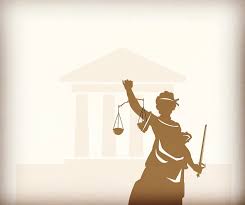How to Write a Power of Attorney for Yourself: A Comprehensive Guide
A power of attorney (POA) is a crucial legal document that grants someone the authority to act on your behalf in specified matters. While it may seem paradoxical, there are situations where you might need to write a power of attorney for yourself. This article will guide you through the process of document drafting for a self-power of attorney, including legal considerations, key components, and best practices.
1. Understanding the Concept
Before beginning the document writing process, it's essential to understand what a self-power of attorney entails. This unique legal instrument allows you to act on your own behalf in situations where you may not be physically present or when you need to confirm your authority to third parties.
2. Legal Document Analysis
Prior to drafting a contract, it's crucial to conduct a thorough legal contract analysis of the situation requiring the POA. This helps determine:
- The legality of a self-POA in your specific case
- The necessary scope of powers
- Potential limitations and caveats
3. Document Structure
When starting the document drafting process, understand the basic structure of a power of attorney. It should include:
- Place and date of creation
- Your full name (as both the principal and agent)
- Personal identification details
- Residential address
- List of powers granted
- Duration of the POA
- Signature
4. Agreement Drafting
When writing the contract for a self-power of attorney, clearly articulate the purpose and scope of powers. For example:
"I, [Full Name], authorize myself to represent my interests in [organization name] with the right to [list specific actions]."
5. Specific Phrasing
As you're drafting a contract for yourself, the phrasing may seem unusual. For instance:
"The principal authorizes themselves to act on their own behalf..."
6. Document Proofreading
After the initial document drafting, it's crucial to perform thorough contract proofreading. Pay attention to:
- Accuracy of personal details
- Clarity of language
- Absence of ambiguities
7. Notarization
In most cases, for a self-power of attorney to be legally binding, it requires notarization. A notary will perform a contract analysis and verify its compliance with the law.
8. Situation-Specific Considerations
Depending on the purpose of the POA, there may be different nuances in document drafting:
a) For banking operations:
When drafting a contract, specify the exact operations you're authorizing yourself to perform, such as:
"...with the right to open and close accounts, deposit and withdraw funds, obtain statements..."
b) For representation in government agencies:
In this case, document analysis should include studying the requirements of the specific agency. Phrasing might include:
"...represent my interests in all government bodies, institutions, and organizations with the right to submit and receive documents..."
c) For property management:
Here, contract proofreading is particularly important as errors can lead to serious consequences. Example phrasing:
"...manage my property, including the right to sell, gift, exchange, lease..."
9. Duration of the POA
When drafting a contract, always specify the duration of the power of attorney. This could be a specific date or phrases like "for a period of three years" or "indefinitely."
10. Limitations and Caveats
When writing a contract for a self-POA, you can include certain limitations, such as:
"...except for the right to sell real estate" or "...with a limit on transaction amounts up to 100,000 dollars."
11. Revocation Clause
It's important to understand that you have the right to revoke the self-power of attorney at any time. When drafting an agreement, you can include a clause about the revocation process.
12. Legal Contract Analysis
After document writing, it's recommended to conduct a thorough legal contract analysis. This may include:
- Checking compliance with current legislation
- Evaluating the completeness and clarity of wording
- Identifying potential risks or gaps
13. Registration of the POA
In some cases, registration of the power of attorney may be required. Agreement analysis will help determine if such registration is necessary and where it should be conducted.
14. Copies and Storage
After contract drafting, it's important to make several copies of the power of attorney and store them in a safe place. Keep the original at home and carry a copy with you.
15. Practical Application
It's crucial to understand how to practically use a self-power of attorney. When presenting such a POA to third parties, be prepared to explain its specifics and legal force.
16. Updating the POA
Over time, there may be a need to update the power of attorney. Regular document analysis will help determine when this is necessary.
17. Legal Implications
Understanding the legal implications of using a self-power of attorney is critical. Improper agreement drafting or use can lead to legal issues.
18. Alternative Instruments
In some situations, other legal instruments may be more appropriate than a self-power of attorney. Contract analysis of the situation will help determine the most suitable option.
19. Legal Consultation
While document drafting can be done independently, consultation with a lawyer can be very beneficial. Professional legal contract analysis will help avoid mistakes and ensure maximum effectiveness of the POA.
20. Ethical Aspects
It's important to understand the ethical aspects of using a self-power of attorney. It should not be used to circumvent the law or mislead third parties.
Writing a power of attorney for yourself is a unique legal process that requires attention to detail and understanding of legal nuances. Proper agreement drafting, thorough document analysis, and adherence to all formalities will allow you to create an effective legal instrument. Remember that each case is unique, and what works in one situation may be inappropriate in another. Therefore, it's always recommended to conduct a detailed legal document analysis and, if necessary, seek professional legal assistance. A properly drafted and executed self-power of attorney can become a useful tool in solving various legal and practical tasks.




































